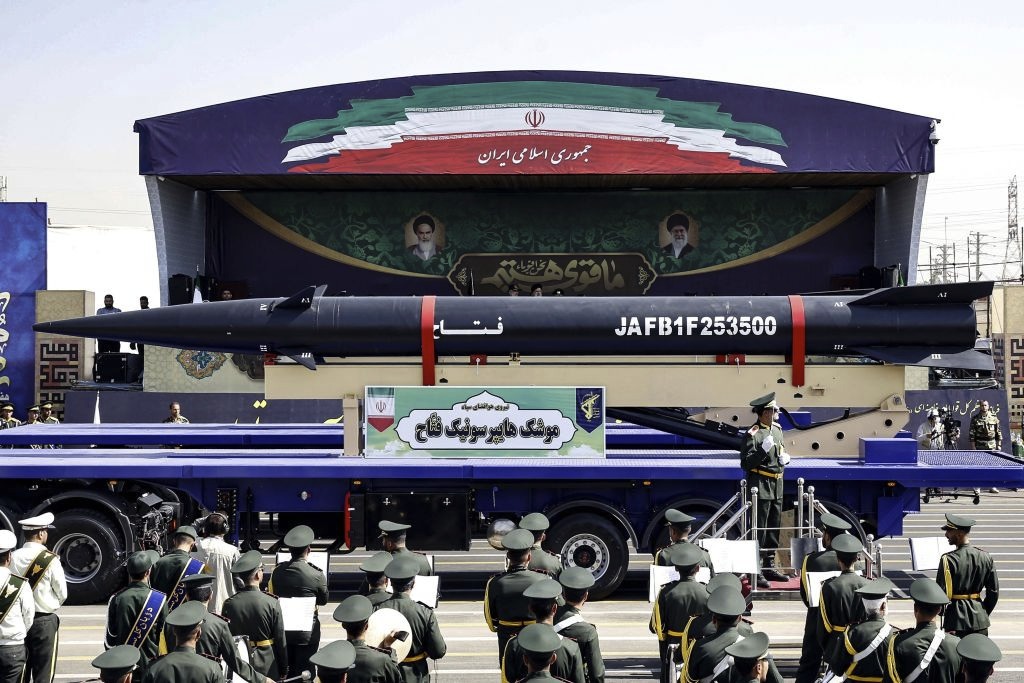How does sanctions-ridden Iran find a multibillion war chest to fund 6 armies fighting in 4 Mid East wars?
DEBKAfile Special Expose April 24, 2015
According to figures reaching debkafile in March, Iran is spending a vast fortune – up to an estimated $6-8 billion per year – to keep six armed forces fighting in four Middle East war campaigns for expanding its sphere of influence. Month after month, Tehran forks out close to half a billion dollars – and sometimes more – to keep those conflicts on the boil. How Iran manages to keep this war chest flowing so abundantly from an economy crippled by international sanctions has never been explained.
Syria
As the Syrian war enters its fifth year, Iranian Revolutionary Guards are found to be running it from four command and control centers, our military and intelligence sources report:
1. In Damascus, the IRGC operates as a part of the Syrian General Staff, with two imported pro-Iranian militias at its independent disposal. This command center has three tasks: To oversee the Syrian general staff and monitor its operational planning; to guard President Bashar Assad’s regime and his family; defend key locations such as the military airport and Shiite shrines, and keep the highways to Lebanon open.
2. In the Aleppo region of the north, IRGC officers were engaged in drawing up plans for a general offensive to rout rebel forces from positions they have captured in the city. Tehran attaches prime importance to a peak effort for the recapture of Aleppo, Syria’s largest city. The IRGC command has transferred large-scale Hizballah forces from Lebanon to this arena, along with Afghan and Pakistani Shiite militias. Thousands of these combatants underwent training at specialist IRGC bases. Our military sources disclose that those militias recently took so many casualties that Iranian officers decided to hold off the Aleppo offensive.
3. In the Qalamoun Mts., which are situated athwart the Syrian-Lebanese frontier, Tehran has given high priority to flushing rebel forces, including the Nusra Front and the Islamic State, out of the pockets they have seized on the mountain slopes, so as to clear the mountain roads for the passage of Hizballah units. This offensive has also been delayed.
4. In South Syria, Iranian officers led a large-scale month-long drive to drive rebel forces out of the area they hold between Deraa and Damascus, in order to position Iranian-led Hizballah and pro-Iranian militia forces face to face with the Israeli army on the Golan. This drive has so far been stalled.
Tehran establishes – and pays for – new Syrian army
Iranian officers have established, trained and equipped a new 70,000-strong fighting force called the Syrian National Defense Force. Its operations, including the soldiers’ wages, are financed from Tehran’s pocket.
Iran runs airlifts day by day to re-supply the Syrian army with weapons systems and ammunition, and the Syrian Air Force with bombs and ordnance for attacks against rebel forces – of late, mostly barrel bombs. Intelligence sources estimate that Iran’s expenditure in the Syrian conflict now hits $200 million per month – around $2.5 billion a year.
Iran bankrolls Hizballah from top to bottom
The 25,000-strong Lebanese Shiite Hizballah operates under the direct command of IRGC officers. All its military equipment comes from Tehran, which also draws up its annual budget. Each month, Iran transfers to Beirut $150-200 million, as well as paying for all the Lebanese militias’ expenses for maintaining an expeditionary force in Syria. Hizballah costs Tehran an approximate $2 billion per annum.
An all-Shiite “people’s national army” for Iraq, re-supplies for Yemen
Iran’s deep military intervention in Iraq includes the creation of an all-Shiite “people’s national army.” It follows the same template as the Syrian National Defense Force and consists of the same number of fighters – 70,000 troops.
Tehran has also invested in barricades to fortify Baghdad against invasion from the north and the west.
The offensive to retake the Sunni town of Tikrit from the Islamic State was led by Iranian officers, and fed constantly with high-quality weapons systems, including missiles and tanks.
All the war materiel required by the Iraqi army and Shiite militias fighting the Islamic State is airlifted to Baghdad, some directly from Iran.
There is no reliable estimate of the Islamic Republic’s current contribution to Iraq’s war budget (estimated at a quarter of a billion dollars per month) because part of the cost is carried by the Iraqi government from oil revenues.
In Yemen, until Saudi Arabia and Egypt imposed an air and sea blockade a month ago, Iran ran supplies by air and sea to the Shiite Zaydi Houthis and their Yemeni army allies whom Tehran championed, sponsored and funded directly. The deployment of US warships in the Gulf of Aden this week put a stop to this traffic. But by then, Iran had sunk an estimated half a billion dollars in a Houthi victory.
Sanctions are no bar to Iran’s ambitions
This arithmetic is testimony to Iran’s mysteriously deep pockets. The sanctions the US, Europe and the United Nations clamped down on Tehran clearly had no effect on its willingness and ability to lay out fabulous sums to promote its ambitions as Middle East top dog.





















